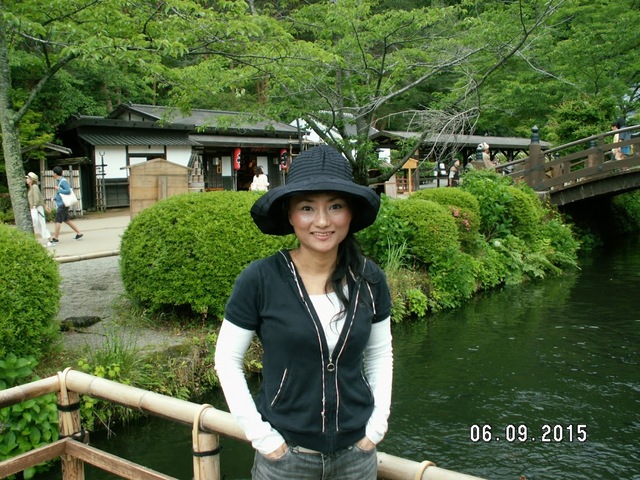凛とした感じを放つ人がいる。
There is someone who gives off the dignified atmosphere.
そのようなしゃきっとした人に会うと私まで気が引き締まる。
When I meet the one who is steady, I get to feel tense.
凛としていると言える人には、
姿勢が正しく、
清らかな気品が漂っている。
Such person we can describe as exalted,
his/her having a correct position and serene dignity.
また、その人は厳かな雰囲気がまとっていて、
つつましい気高さが香水のように香り立つ。
Also, the person’s aura has an awe
and a halo of modest fragrances like perfume.
仕草も毅然としていて、
押しも押されもしないが
堂々とした威力も備え持つ。
With an imposing gesture,
the manner is neither obtrusive
nor obtrusively taken
but possesses bold authority.
行いにはどっしりした重みがありながら、
重すぎず軽すぎずの無重力のような感じがある。
The behavior has a solid significance,
but it is not too heavy or too light
like weightless beyond gravity.
私は長年、どうやって
そのような特性がある人がいて
無い人がいるのかに変わらない関心を寄せている。
For many years, have been interested in
why someone has such specific individuality or others do not.
そのような品性はどうやって養えるだろうか。
How to nurture for such personality?
どのように鍛えられて、どうやって身に着くのだろうか。
How to train it, how to personalize it?
ある人が品位よく、
気高くなりたいと願うならそうなれるだろうか。
If someone wants to be noble or decent,
can one be able to have it?
塾を経営していた時、
小学4年から入塾して中学3年まで通っていた生徒がいた。
When I was a school administrator,
there was a student who entered
at fourth grade of elementary
and stayed through his third grade of junior high school.
彼はサッカーが好きで、活発だったが、
勉強も次第にできるようになった。
He liked soccer and briskly did his club activity;
he came up steadily to get a good score for his study.
誰も認める努力をして偏差値の高い高校に入り、
入りにくい理科系の大学に進んだ。
He made efforts that everybody admitted
and could go to a higher level of high school.
And then he continued to a science university
which was hard to pass the exam.
大学生になって、講師としてまた塾に入った時の彼は
何か重みのような存在感があった。
He became a college student
and he started work at my own after school
as a part-time teacher,
and at that time I found his presence got heavier.
彼がなりたかった薬剤師になった時は
その重みがしっかりしてきたような感じがあった。
When he became a pharmacist as he dreamed,
his presence was afirmed.
友人の一人に上品になることに拘る人がいた。
There was a friend of mine who wanted to refined.
彼女は色白で、身長が高く、
プロポーションもモデル並みであった。
She had pale skin, tall,
and her proportion was like a model.
清潔な感じもあって、またきれいな女性であった。
She presented clean and also pretty.
だが、彼女が放つ言葉は
自分だけが万事の中心になっていて、
他人は彼女の付属物のような言い方で一貫していた。
But the words she spoke were self-focused for all
and treated others like her appendage.
他人を貶し、
他人に無条件的な理解を求め、
他人の時間を無駄に使う傾向があった。
She denigrated others
while seeking unconditional understanding for her
and tended to use other’s time wastefully.
自分に対して自信感に溢れ、
自分がしたことを美化して絶賛していた。
She was overly confidence for herself,
admired what she has done to beautify.
自分に利得になると人と関わるが、
損になりえるような状況になるときっぱり縁を切った。
She kept the connection with people
who are advantageous for her
but cut the relationship without hesitation
when the situation inclined to be a disadvantage.
彼女はことばで人との関係を切り、
他人を悪者に仕立てたが、
彼女の血縁だけは絶対的な結束力があるようだった。
She cut off a relationship with people with words,
tailored others rascal
but seemed to have absolute cohesion
with relatives and her family.
その二人の例から、
外見からは気品を感じさせることは共通してみられた。
From these two examples,
the commonality was an elegance from outsides.
中身が極端的に違っているが、
ぱっと見た時は気品があるように見られた。
Their inner contents were extremely different
but with a brief glance,
they looked to have a dignified atmosphere.
前者は人格が知り亘った時、
より強い信頼感を持てる切っ掛けになるが、
後者は本当の性格が表れた時、
好意を感じていた人が背信感を感じるようになる場合がある。
The former one can be trusted stronger than ever
when one’s personality eventually has been well known,
but the latter one may have a possibility that
others favored feelings turn to betrayed.
私は両者の例について良し悪しを判断したくない。
I do not want to judge good or bad for both examples.
どっちが正しいか誤りかも計りたくない。
I do not want to decide which one is true or false.
人が選ぶ価値観に判決を下したくもない。
I do not want to do a judicial decision making
onto people’s value choice.
ただ、一瞬一瞬の選択が重なって凛とした人にもなり、
偽物にもなるということだけは
確かであると信じている。
But, I certainly believe that
the momentary choices that people make each time,
are a link to dignity or fake pride.





















